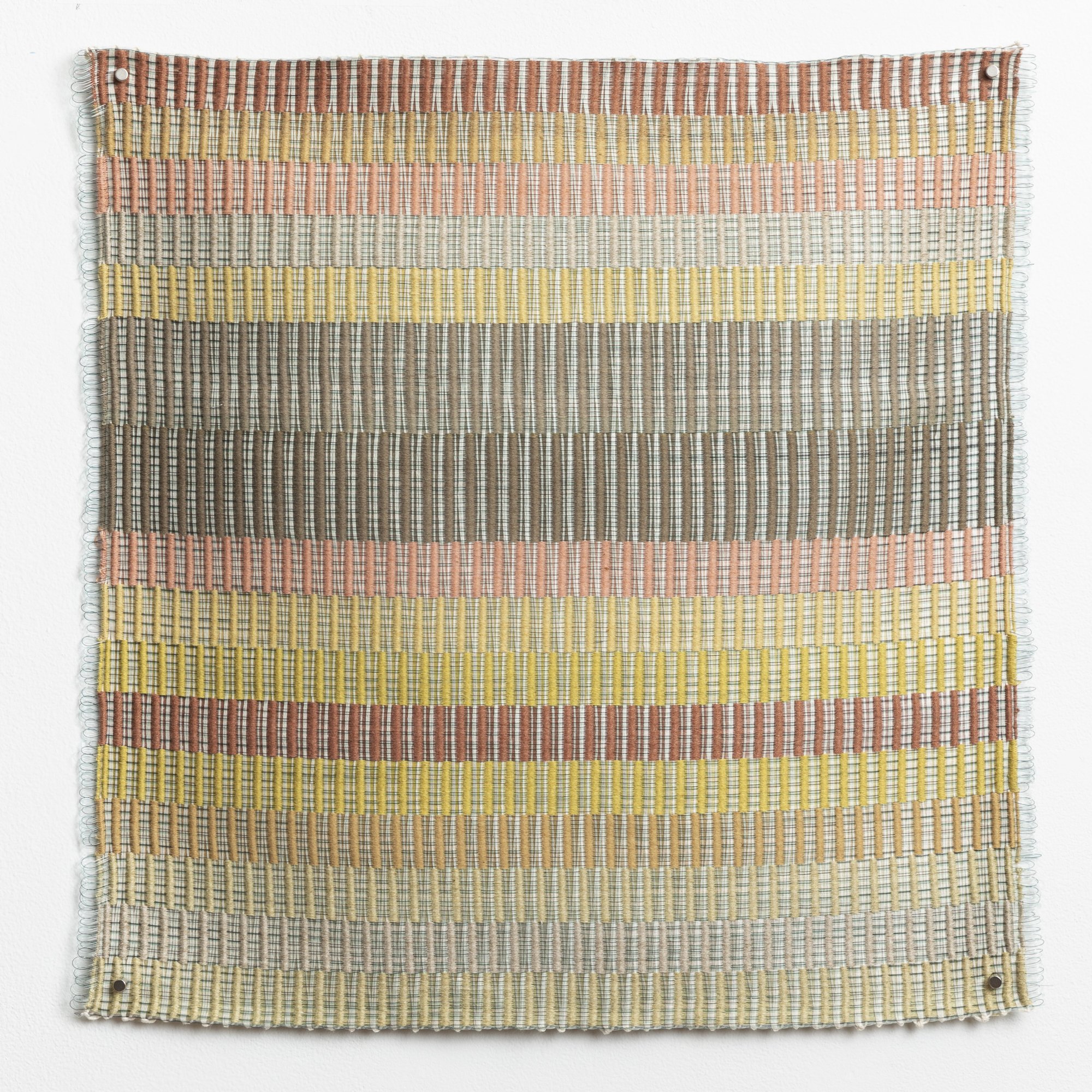Silt Studies
2021
Silt—tiny particles of eroded rocks and mineral—are carried by flowing water, eventually deposited elsewhere as sediment. When ecosystems are polluted, silt goes from benign to destructive, carrying with it the toxins it is exposed to as it moves from one part of a watershed to another. As the detritus of our human life on land runs downstream and then circulates back through bodies, watersheds are one window into the interdependence of ecological and human health.
In each woven Silt Study, temperature data for one of the 18 major US watersheds is materialized as hand-dyed, color-coded cotton. In my translation of the data, 126 years takes form as 18 rows of color, each row an average of 7 years of temperature. I interweave these plant-derived fibers with petrochemical-derived fishing line, drawing connections between rising temperatures, petrochemical extraction, and the buildup of toxic plastics in the earth and our bodies. Up close, one can see the warp threads curving as they travel through the wefts, the arc of the threads evoking a gentle wave, the bend of a river, the force of being moved by alternating plant and petrochemical material.
Photos by Joseph Minek
























